
States with the most multigenerational households
People worldwide are looking to do anything they can to mitigate their risk of getting sick during the COVID-19 pandemic, from social distancing and quarantining to wearing masks when outside the home. Unfortunately for those living in multigenerational households, staying home still presents a risk.
Those living in homes with multiple generations are more at risk for contracting the virus, as younger members of the household could transmit the virus to older and more vulnerable relatives. This danger is heightened in families in which working-age members of the family are not able to work remotely, such as grocery store clerks or health care professionals.
Even before the new coronavirus, other trends were clear when considering the rise of multigenerational households in the United States. One trend spurring the growth of such households was the Great Recession, which created harsh economic conditions that forced many millennial children to move back in with their parents—so called "boomerang" kids. Another trend that has contributed to multigenerational living has been the spike in home prices in parts of the country, particularly tech hubs like Seattle, which makes it difficult for different generations of the same family to each be able to afford their own homes.
And not all states share these demographics or trends equally. To identify the states with the most multigenerational households, Stacker used 2018 data from the U.S. Census American Community Survey (ACS), released in 2019. All 50 states and the District of Columbia are ranked according to their share of multigenerational households, defined by the Census Bureau as family households consisting of three or more generations. The story also offers data on each state's share of households that include grandparents living with their grandchildren; these figures differ slightly from the numbers of multigenerational households because some grandparents and grandchildren live together without parents. Other resources, including research from Pew, provide context on age, racial, and ethnic groups.
Click through for a look at states with the most multigenerational households.

#51. North Dakota
- Total multigenerational households: 4,472 (1.4% of total)
- Households with grandparent(s) living with grandchildren: 5,079 (1.6% of total, #1 lowest among all states)
- Total households: 314,903
Studies have shown that the likelihood of a household being multigenerational may be related to its racial composition, with white households being less likely to be multigenerational. So it’s no surprise that North Dakota, which is 87% white, has the lowest number of multigenerational households.
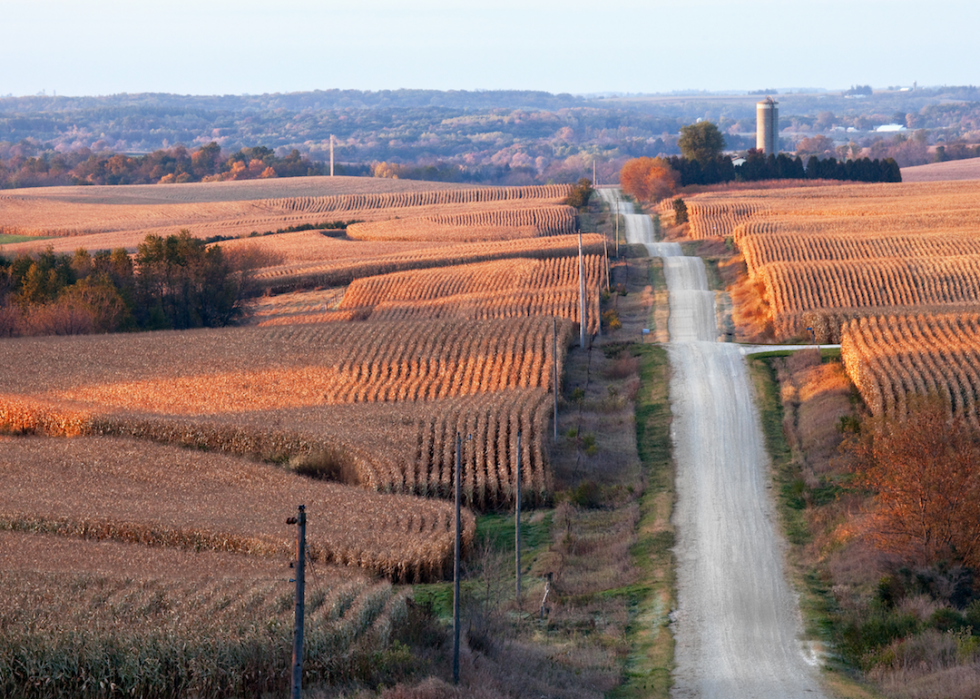
#50. Iowa
- Total multigenerational households: 22,169 (1.8% of total)
- Households with grandparent(s) living with grandchildren: 25,363 (2.0% of total, #2 lowest among all states)
- Total households: 1.3 million
Although Iowa ranks low on the list of states with multigenerational housing, some Iowans who live in houses with multiple generations have gone on to make a name for themselves because of it. The prestigious Iowa Writers’ Fellowship has awarded one such Iowa citizen its top prize, who places growing up in a multigenerational household at the very top of her biography.
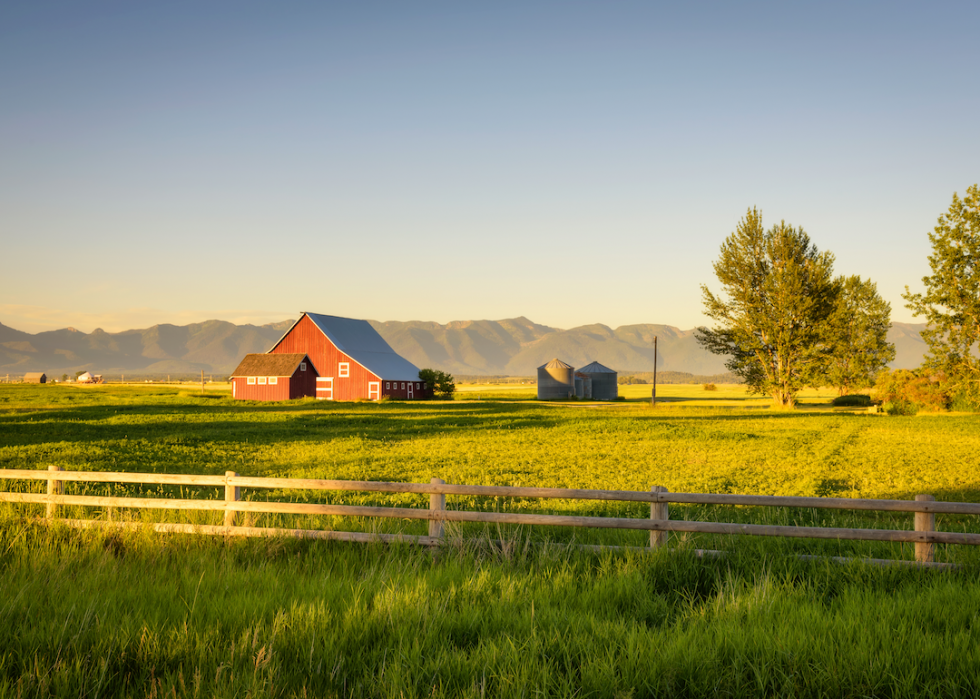
#49. Montana
- Total multigenerational households: 7,665 (1.8% of total)
- Households with grandparent(s) living with grandchildren: 9,692 (2.3% of total, #6 lowest among all states)
- Total households: 423,240
Few families in Montana live with multiple generations under one roof, but at least one Montana architecture firm is expecting that to change. Engel&Volkers is encouraging clients to consider the rapidly aging population in the United States as they think about designing their homes, and has drawn up options for homes that accomodate aging parents.

#48. South Dakota
- Total multigenerational households: 6,483 (1.9% of total)
- Households with grandparent(s) living with grandchildren: 8,009 (2.3% of total, #8 lowest among all states)
- Total households: 341,565
Few households in South Dakota are multigenerational, but this isn’t the case across all demographic groups. Approximately 20% of the state’s Native American population lives in multigenerational housing, according to census data.

#47. Wisconsin
- Total multigenerational households: 46,083 (2.0% of total)
- Households with grandparent(s) living with grandchildren: 48,691 (2.1% of total, #3 lowest among all states)
- Total households: 2.3 million
Although Wisconsin has been slow to arrive at multigenerational living, a housing trend in the state is starting to change all that. Greater Milwaukee Association of Realtors notes that home inventory in the state has been tight for several years, which has led to more families living together.
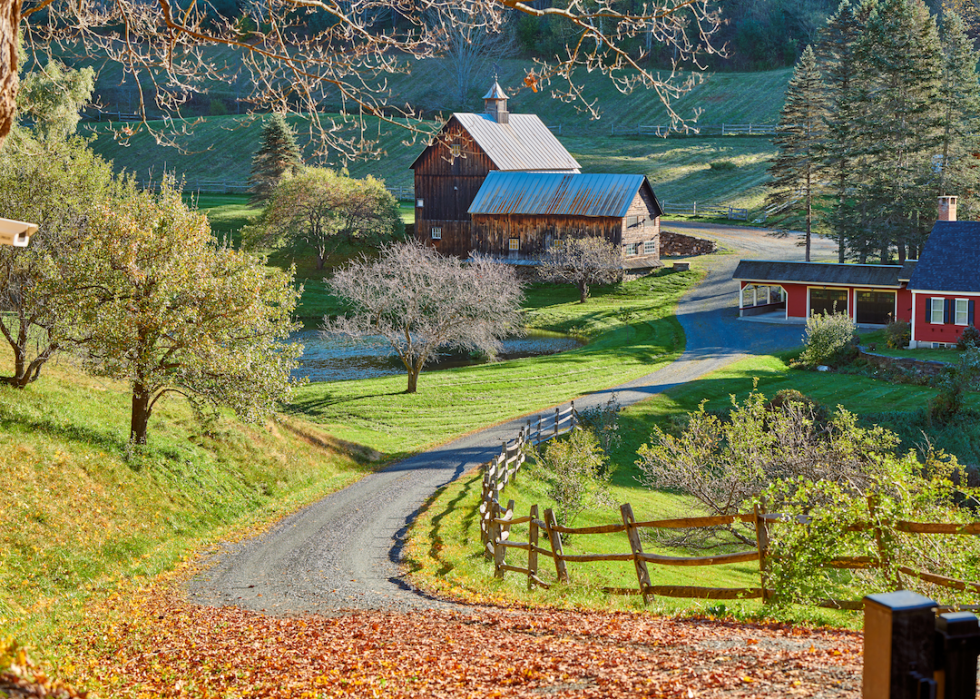
#46. Vermont
- Total multigenerational households: 5,109 (2.0% of total)
- Households with grandparent(s) living with grandchildren: 5,804 (2.2% of total, #5 lowest among all states)
- Total households: 259,589
A number of demographic shifts may lead to an uptick in multigenerational families in Vermont in the coming years. There is a shortage of housing, particularly affordable housing, and an expected increase in demand for senior living, which is prompting some developers in the state to build housing complexes specifically engineered to be multigenerational.

#45. Minnesota
- Total multigenerational households: 43,658 (2.0% of total)
- Households with grandparent(s) living with grandchildren: 45,645 (2.1% of total, #4 lowest among all states)
- Total households: 2.2 million
Minnesota is mirroring the rest of the country in upticks of multigenerational households. A Realtor.com study released February 2020 found home seekers were attracted to the state's access to lakes, which offer multigenerational families an easy way to get out and enjoy nature together.

#44. Maine
- Total multigenerational households: 11,680 (2.1% of total)
- Households with grandparent(s) living with grandchildren: 12,998 (2.3% of total, #7 lowest among all states)
- Total households: 556,955
The Parenting Relationships Research Lab in Maine, which studies and performs outreach for blended families including multigenerational homes, was formed in January 2019 in response to a growing number of blended families throughout the state. In addition to research and support for family dynamics and mental health, home builders in Maine have also taken up the subject of multi-generational households. Mark Patterson, who owns a home-building outfit serving Maine and New Hampshire, told Realtor.com that people in the state are more concerned now with designing homes that those above 80 will be able to navigate, including those without stairs.

#43. Wyoming
- Total multigenerational households: 4,887 (2.1% of total)
- Households with grandparent(s) living with grandchildren: 6,198 (2.7% of total, #10 lowest among all states)
- Total households: 230,630
A shortage of housing in Wyoming is contributing to the rise of multigenerational housing. Among the state’s Native American population, waiting lists for alternative housing can be long—which means more people are living with multiple generations under one roof.
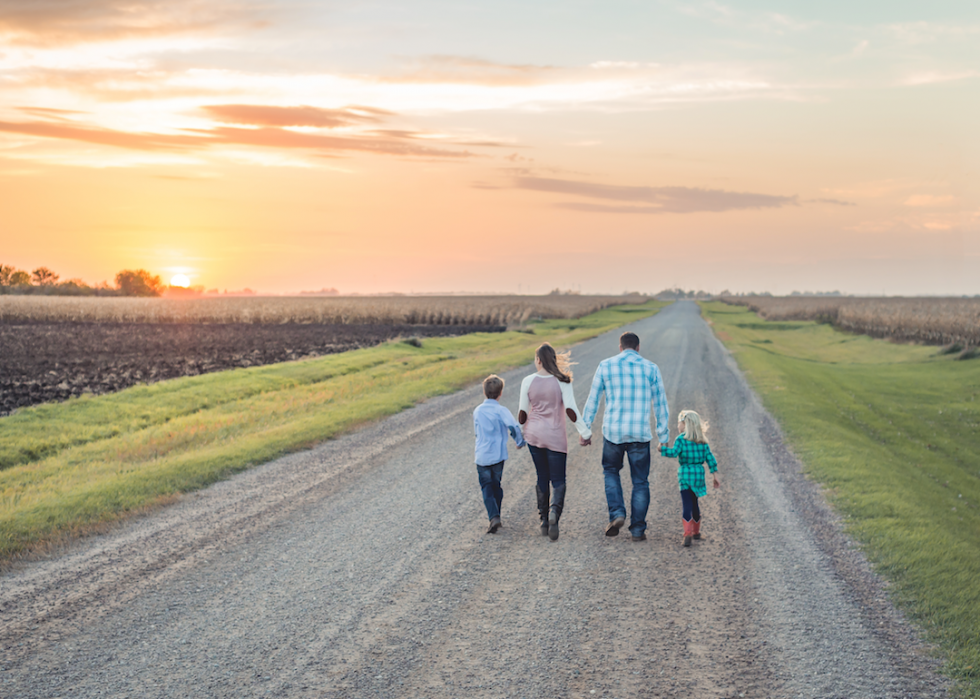
#42. Nebraska
- Total multigenerational households: 16,047 (2.1% of total)
- Households with grandparent(s) living with grandchildren: 18,205 (2.4% of total, #9 lowest among all states)
- Total households: 754,063
As COVID-19 spreads across the United States, Nebraskans have sounded the alarm over how the virus can affect multigenerational households. Doctors in the state pointed out that multigenerational families are more likely to have some members of the family still out and working, making it more likely that they will bring the virus home and infect older and more vulnerable members of their families.

#41. Kansas
- Total multigenerational households: 27,284 (2.4% of total)
- Households with grandparent(s) living with grandchildren: 30,715 (2.7% of total, #11 lowest among all states)
- Total households: 1.1 million
Kansas developers have taken a strong interest in the trend towards multigenerational living. A massive $66 million multigenerational wellness and residential living neighborhood has been among the Kansas projects recently undertaken to accommodate increased demand.
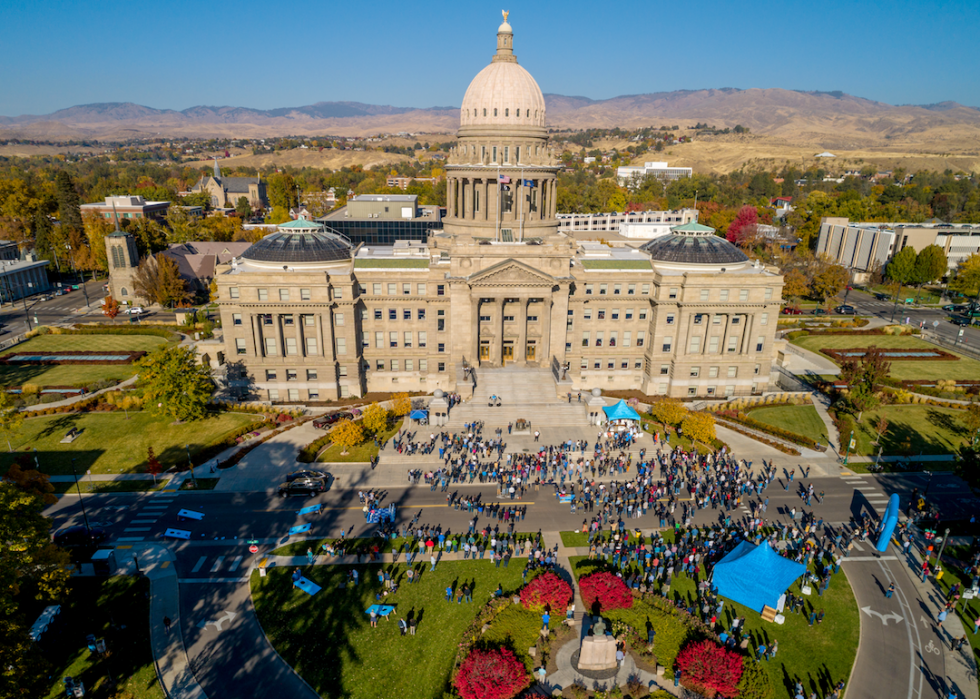
#40. Idaho
- Total multigenerational households: 15,968 (2.6% of total)
- Households with grandparent(s) living with grandchildren: 17,690 (2.9% of total, #12 lowest among all states)
- Total households: 618,331
COVID-19 hit at least one multigenerational family in Idaho hard. During the first few weeks of the crisis, the first five cases in Pinal County all originated in the same household.
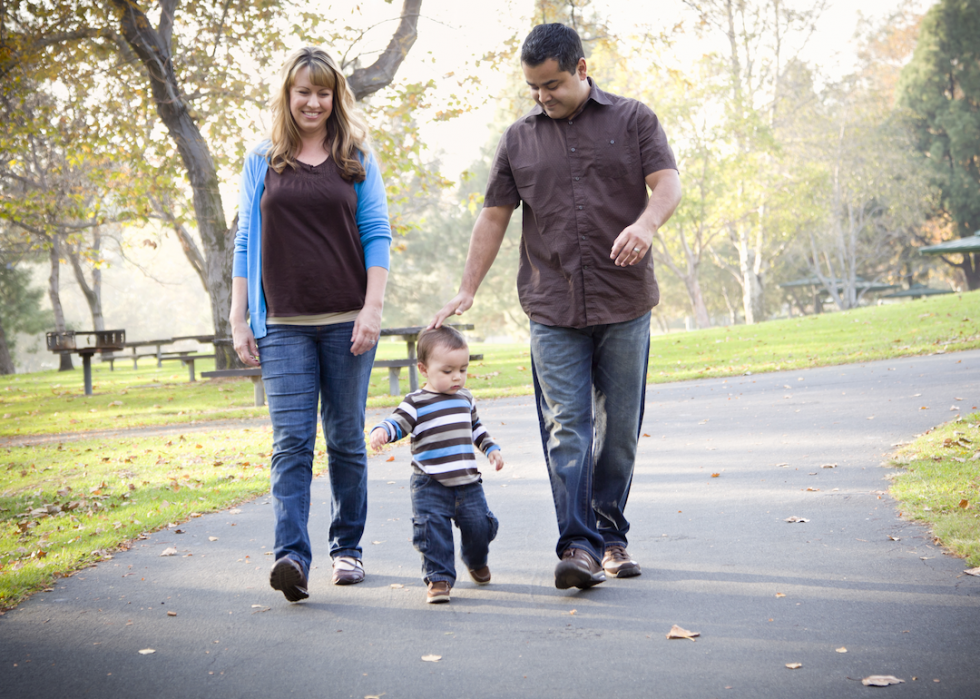
#39. Ohio
- Total multigenerational households: 130,500 (2.8% of total)
- Households with grandparent(s) living with grandchildren: 147,957 (3.2% of total, #20 lowest among all states)
- Total households: 4.7 million
Ohio is one state where builders, architects, and developers are anticipating an uptick in demand for multigenerational homes. One custom building company has put a premium on such plans, advocating for everything from wheelchair accessible bathrooms to elevators.

#38. Missouri
- Total multigenerational households: 67,446 (2.8% of total)
- Households with grandparent(s) living with grandchildren: 75,274 (3.1% of total, #19 lowest among all states)
- Total households: 2.4 million
Multigenerational families in Missouri are grappling with social distancing rules during the coronavirus pandemic in unique ways. Younger family members of such homes in the state have said that they are proactively self-quarantining to avoid becoming asymptomatic carriers that might pass the virus on to older and more vulnerable members of the household.

#37. New Hampshire
- Total multigenerational households: 15,042 (2.8% of total)
- Households with grandparent(s) living with grandchildren: 15,248 (2.9% of total, #13 lowest among all states)
- Total households: 528,078
Multigenerational homes can be extremely luxurious. One such home in New Hampshire drew national attention, including from the Daily Beast, which devoted an entire article to the property and called it reason enough to move to New Hampshire.
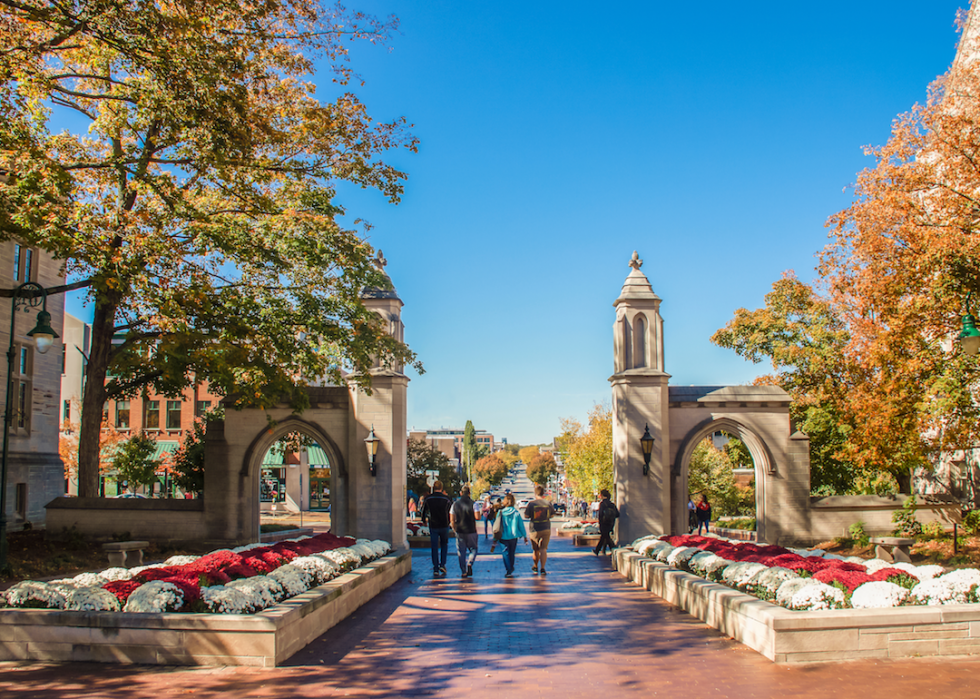
#36. Indiana
- Total multigenerational households: 73,510 (2.9% of total)
- Households with grandparent(s) living with grandchildren: 83,703 (3.3% of total, #24 lowest among all states)
- Total households: 2.6 million
Indiana is one of three states pioneering a design concept specifically created to accommodate the addition of new generations under the same roof. The concept, called Minka, is modeled off a tiny house, but is designed with age-friendly and open design in mind.
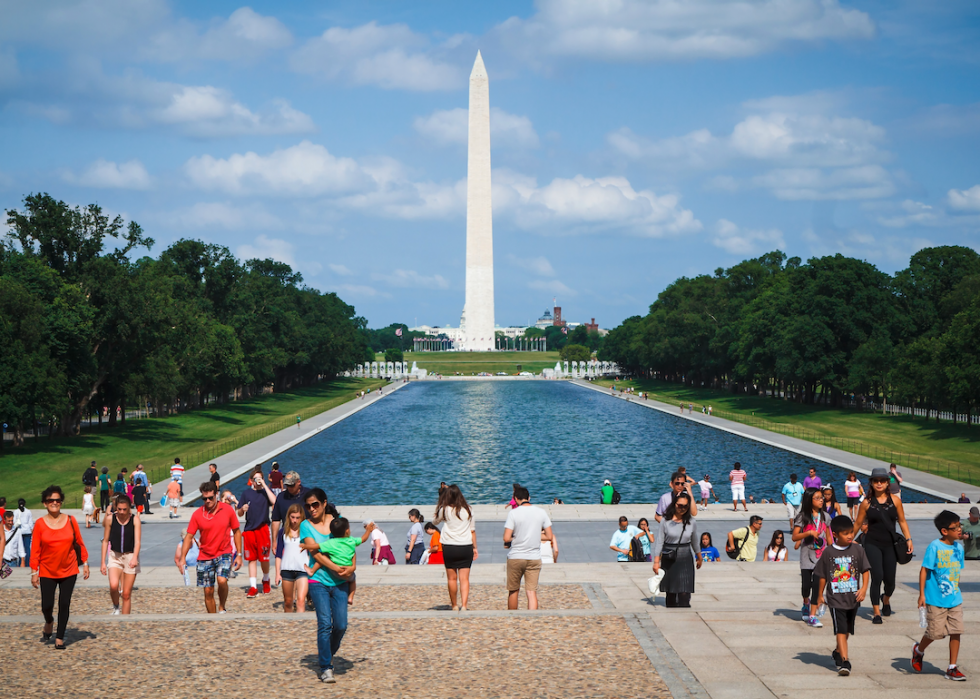
#35. District of Columbia
- Total multigenerational households: 8,106 (2.9% of total)
- Households with grandparent(s) living with grandchildren: 8,216 (2.9% of total, #14 lowest among all states)
- Total households: 281,322
Washington D.C. builders have begun designing dwellings in the nation’s tightly packed capital that allow for multigenerational living without being designed specifically for that. Developers are focusing on designs that can accommodate live-in caretakers, with separate living spaces for older family members built on to existing homes.
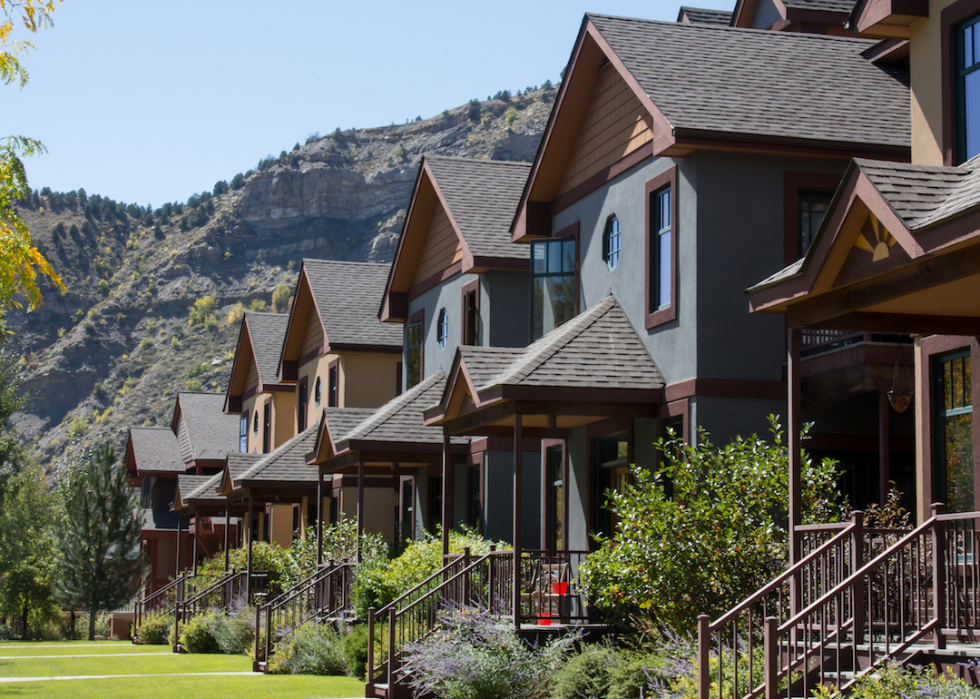
#34. Colorado
- Total multigenerational households: 61,276 (2.9% of total)
- Households with grandparent(s) living with grandchildren: 65,070 (3.1% of total, #18 lowest among all states)
- Total households: 2.1 million
Colorado has seen an increase in multigenerational homes since the Great Recession. Demographers in the state have noted that the uptick exists among all ethnic groups, even outside of those which have traditionally trended towards multigenerational living.

#33. Oregon
- Total multigenerational households: 46,323 (2.9% of total)
- Households with grandparent(s) living with grandchildren: 47,210 (3.0% of total, #15 lowest among all states)
- Total households: 1.6 million
Oregonians are concerned about how the novel coronavirus will impact multigenerational households, specifically among the state’s Native American population. The Indian Health Services division said many Native American households are multigenerational, creating a heightened concern for transmission to vulnerable members in these households.
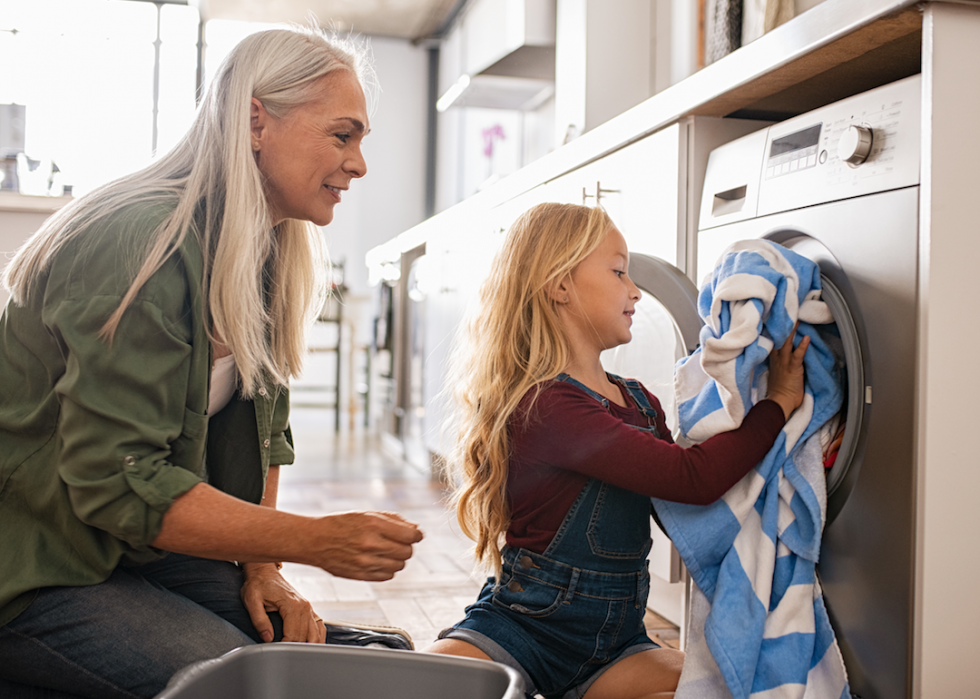
#32. Michigan
- Total multigenerational households: 113,882 (2.9% of total)
- Households with grandparent(s) living with grandchildren: 116,483 (3.0% of total, #16 lowest among all states)
- Total households: 3.9 million
One Michigan grassroots movement that advocates for older Americans has created a model of community and multigenerational living for "grandfamilies." The homes have two to three bedrooms to accommodate younger generations living with older generations in which the advocacy group homes will become a larger trend and model.

#31. Washington
- Total multigenerational households: 87,933 (3.1% of total)
- Households with grandparent(s) living with grandchildren: 89,382 (3.2% of total, #21 lowest among all states)
- Total households: 2.8 million
One reason for the jump in multigenerational households in Washington? The high cost of housing in areas like Seattle. As home prices increase, experts say more families in the city and beyond are opting to live together.
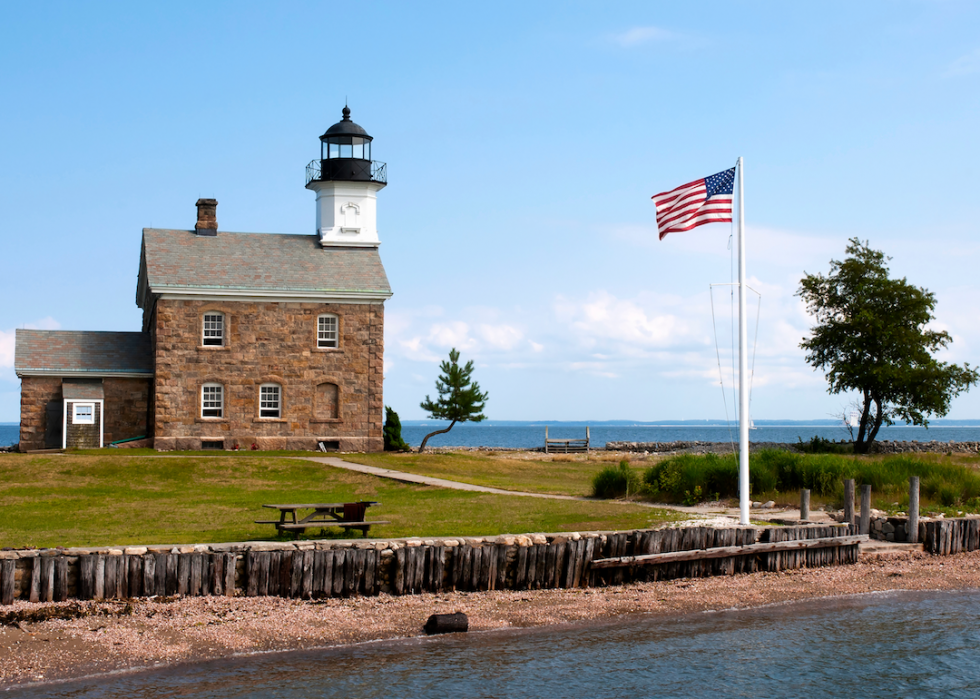
#30. Connecticut
- Total multigenerational households: 43,495 (3.2% of total)
- Households with grandparent(s) living with grandchildren: 41,489 (3.0% of total, #17 lowest among all states)
- Total households: 1.4 million
One Connecticut couple and mother helped explain to the nation how best to live in a multigenerational home. The young couple and the wife’s widowed mother cohabitate in Connecticut and agreed to be profiled by the New York Times, where they shared their tips for making every member of the household feel at home.

#29. Oklahoma
- Total multigenerational households: 47,044 (3.2% of total)
- Households with grandparent(s) living with grandchildren: 57,520 (3.9% of total, #23 highest among all states)
- Total households: 1.5 million
One Ohio developer noticed such a strong trend in the state of families moving in together, specifically adult children “boomeranging” back to live with their parents, that they developed an entire business model around it. The Heritage Home Series is meant to accommodate the different demands of different generations living under the same roof, and has been popular in the state.

#28. Kentucky
- Total multigenerational households: 55,479 (3.2% of total)
- Households with grandparent(s) living with grandchildren: 69,702 (4.0% of total, #16 highest among all states)
- Total households: 1.7 million
Researchers in Kentucky are hard at work studying problems that arise from multigenerational household living. Among these is food insecurity, with researchers in the state focusing on the fact that homes with a grandchild present are twice as likely to have food insecurity as homes without grandchildren.
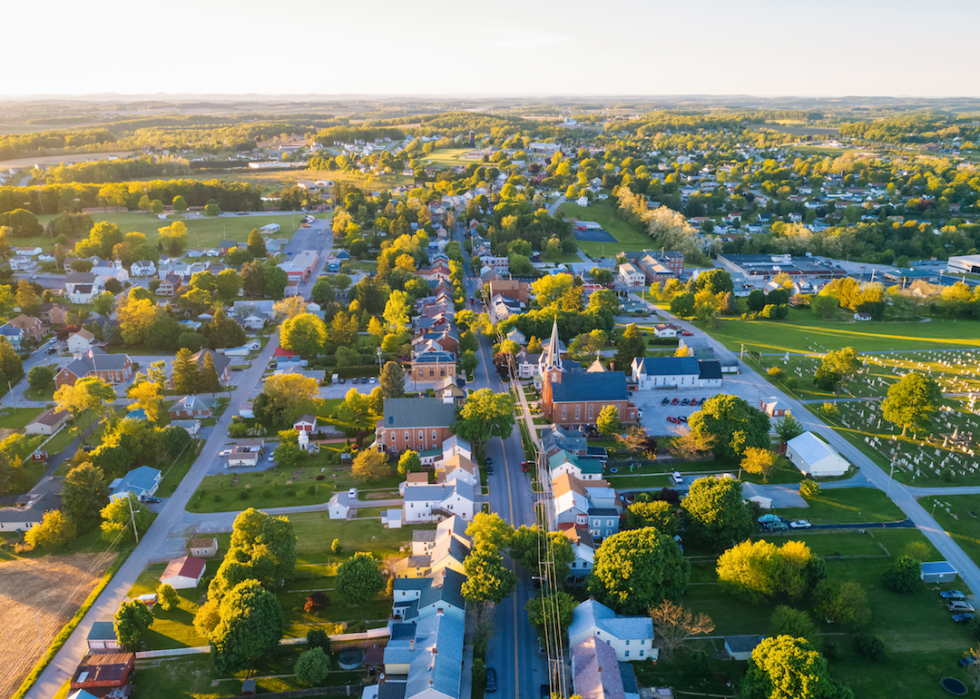
#27. Pennsylvania
- Total multigenerational households: 161,786 (3.2% of total)
- Households with grandparent(s) living with grandchildren: 162,621 (3.2% of total, #23 lowest among all states)
- Total households: 5.0 million
Pennsylvania is concerned about missing out on federal funds due to undercounting in the 2020 census. One cause for concern is the prevalence of multigenerational households, in which not all children or other family members living under the roof are always counted, according to experts.
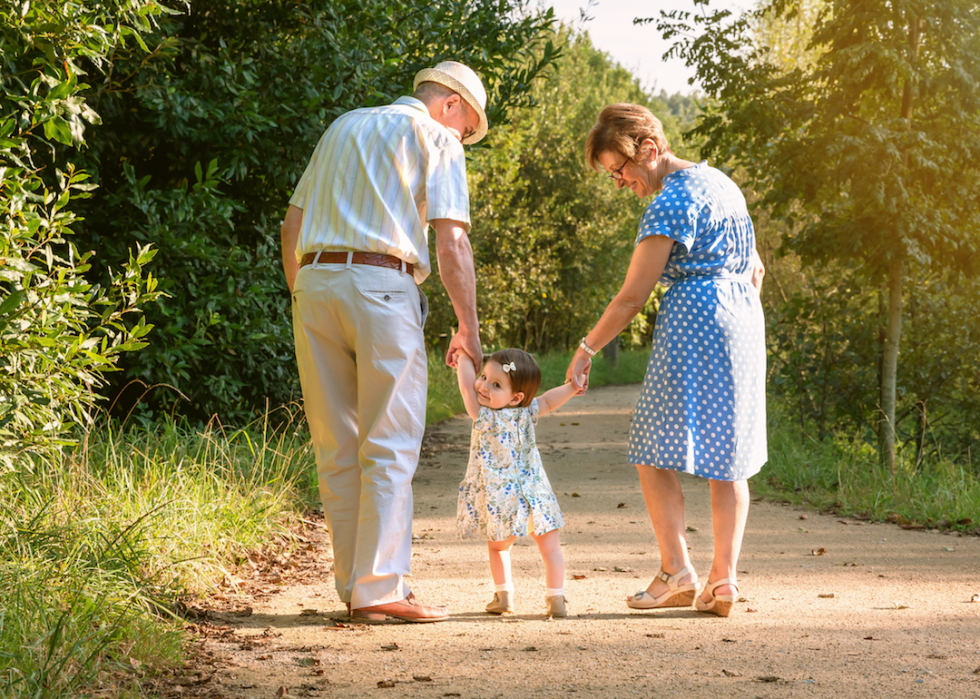
#26. West Virginia
- Total multigenerational households: 23,857 (3.2% of total)
- Households with grandparent(s) living with grandchildren: 28,572 (3.9% of total, #24 highest among all states)
- Total households: 734,676
There is a dark side to multigenerational living in West Virginia. The state has noticed a trend in “multigenerational addiction” clusters under families living under the same roof, which has coincided with the rise of opioid addiction in the state.
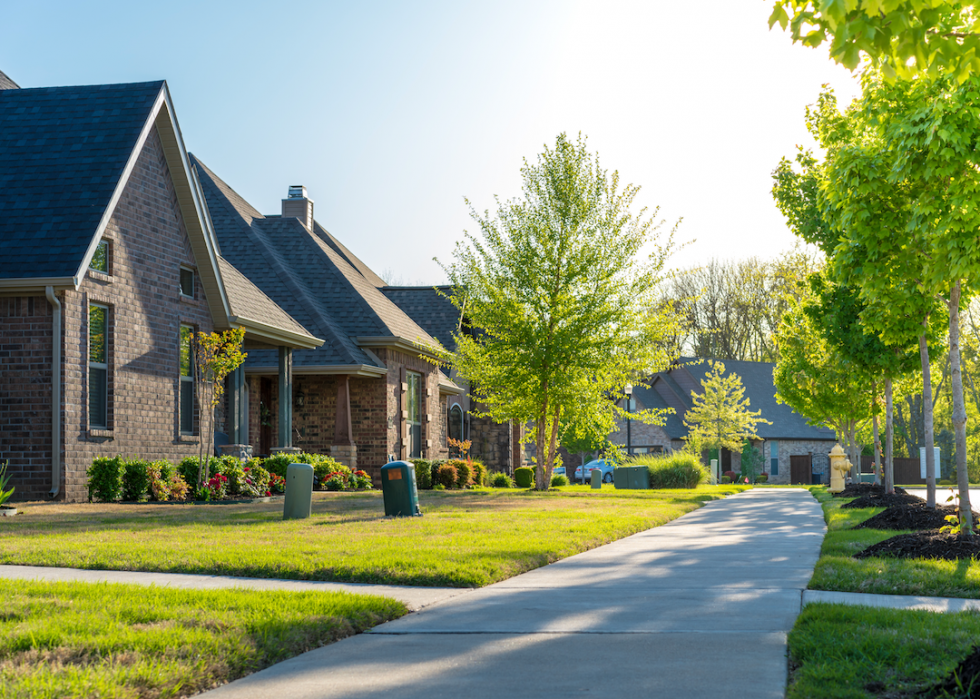
#25. Arkansas
- Total multigenerational households: 37,603 (3.3% of total)
- Households with grandparent(s) living with grandchildren: 46,157 (4.0% of total, #17 highest among all states)
- Total households: 1.2 million
One reason some families may be giving multigenerational living a try in Arkansas? The state is one of the cheapest in the country to build in, with a median price of $162,662, making it relatively more affordable than other states for families to build homes in which they can spread out.

#24. North Carolina
- Total multigenerational households: 131,333 (3.4% of total)
- Households with grandparent(s) living with grandchildren: 145,613 (3.7% of total, #25 highest among all states)
- Total households: 3.9 million
North Carolina is steadfastly centered with the multigenerational housing trend, with real estate companies touting available homes with in-law suites. One such family with three children moved 22 years ago from Brooklyn, New York, to North Carolina live with the wife's father; that same couple in 2015 welcomed their children and four children into their home.
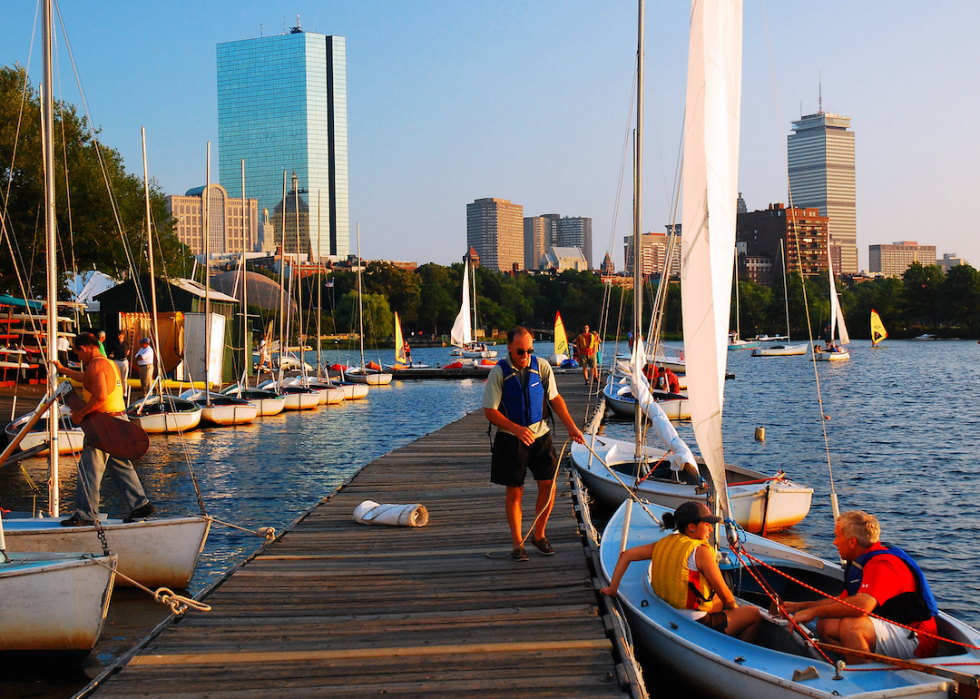
#23. Massachusetts
- Total multigenerational households: 89,688 (3.4% of total)
- Households with grandparent(s) living with grandchildren: 84,184 (3.2% of total, #22 lowest among all states)
- Total households: 2.6 million
The first of a novel kind of a multigenerational household was developed in Massachusetts. The first “grandfamily” house in 1998 was constructed in Boston, with amenities targeting children, senior citizens, and everything in between.
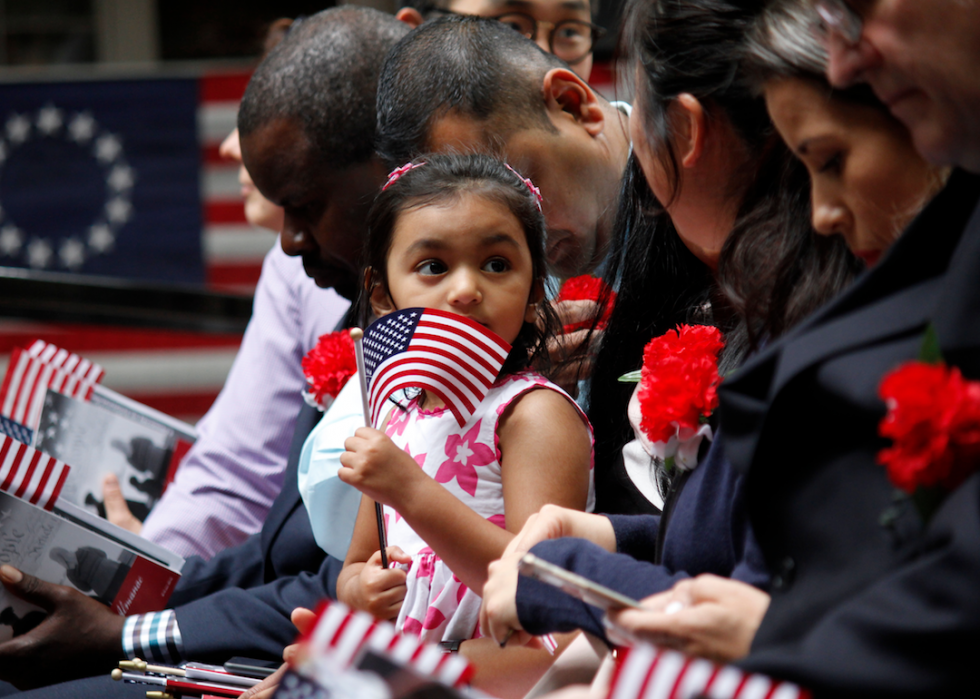
#22. Rhode Island
- Total multigenerational households: 14,243 (3.5% of total)
- Households with grandparent(s) living with grandchildren: 13,625 (3.3% of total, #25 lowest among all states)
- Total households: 410,885
There may be more multigenerational families in Rhode Island than have been officially counted. The Census Bureau found immigrant communities are more likely to live in multigenerational housing, and that this overlaps with a fear, sometimes, of responding to government initiatives like a census.

#21. Alabama
- Total multigenerational households: 66,243 (3.6% of total)
- Households with grandparent(s) living with grandchildren: 79,047 (4.2% of total, #11 highest among all states)
- Total households: 1.9 million
African Americans have been disproportionately affected by COVID-19 around the company. One explanation that has been offered to explain this in Alabama and other states in the Deep South has been the fact that black families are more likely to live in multigenerational homes, which may have the impact of bringing the virus into proximity with older populations.
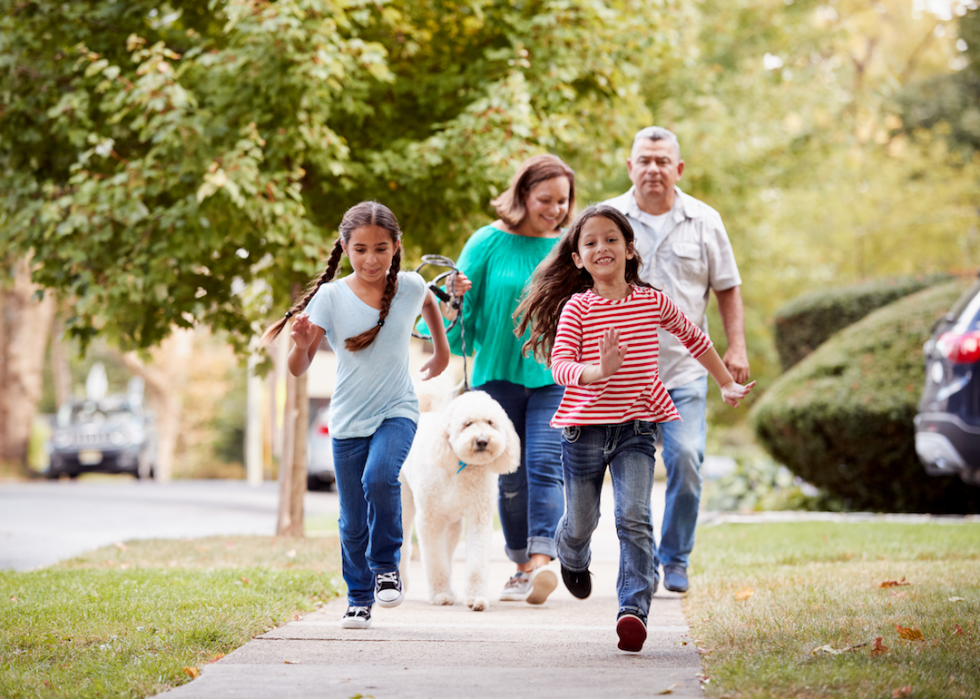
#20. Tennessee
- Total multigenerational households: 92,271 (3.6% of total)
- Households with grandparent(s) living with grandchildren: 107,038 (4.2% of total, #14 highest among all states)
- Total households: 2.6 million
Those who watch real estate trends in Tennessee have noted an uptick in multigenerational homes across the state. They are noting that it is more common than ever for plans for new homes to include living spaces to accommodate separate generations under one roof.

#19. Illinois
- Total multigenerational households: 174,059 (3.6% of total)
- Households with grandparent(s) living with grandchildren: 171,226 (3.5% of total, #26 highest among all states)
- Total households: 4.8 million
Multigenerational households in Illinois are grappling with the challenge of COVID-19 with the addition of a unique set of circumstances. One such family in the state told Vox that the family grandmother cared for her 4-year-old granddaughter while the mother went to work, which means that the mother is at risk of exposing her own aging mother—who is considered more vulnerable to the virus—when she returns each day.

#18. Alaska
- Total multigenerational households: 9,280 (3.7% of total)
- Households with grandparent(s) living with grandchildren: 10,080 (4.0% of total, #19 highest among all states)
- Total households: 253,462
So many people are living in multigenerational households in Alaska that it’s creating something of a challenge for census workers. Officials in the state are worried that census workers won’t be able to accurately count all the people in a single home, which will lead to inaccurate allocations of resources across the state.
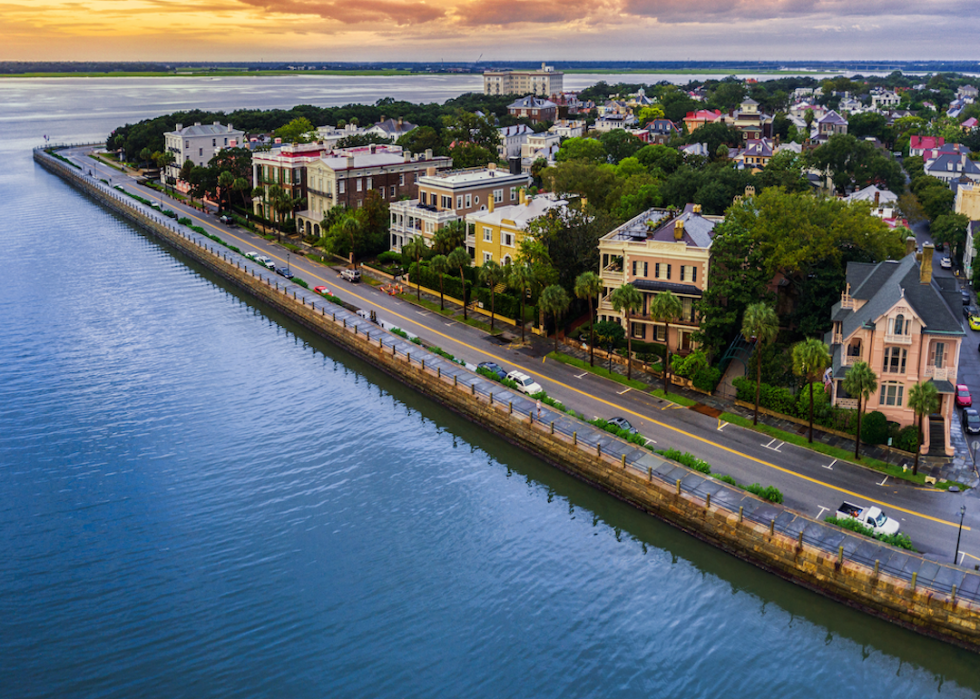
#17. South Carolina
- Total multigenerational households: 70,879 (3.7% of total)
- Households with grandparent(s) living with grandchildren: 80,627 (4.3% of total, #10 highest among all states)
- Total households: 1.9 million
One reason South Carolina may be seeing more households move towards multi-family living is because of rising prices associated with housing. And it’s not just the cost of the homes themselves: The cost of insurance in coastal areas, which may be in part due to global warming, is hastening the trend.
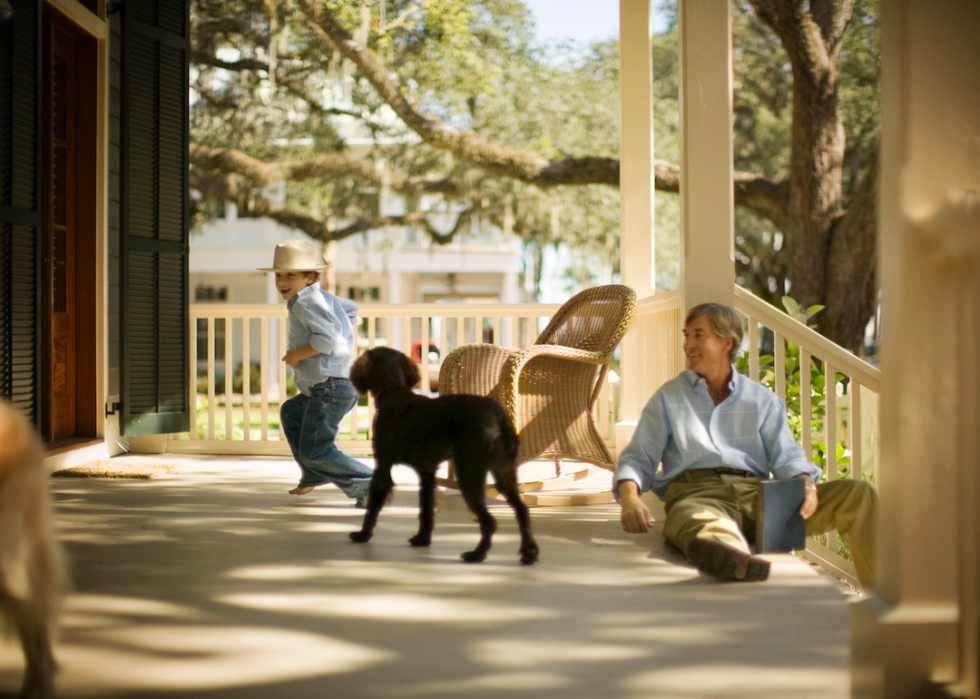
#16. Louisiana
- Total multigenerational households: 65,154 (3.8% of total)
- Households with grandparent(s) living with grandchildren: 76,088 (4.4% of total, #9 highest among all states)
- Total households: 1.7 million
Some families in Louisiana have a unique advantage when it comes to creating multigenerational homes. Many houses in the state are big, rambling properties from decades ago that offer more space for multiple generations to spread out under one roof.
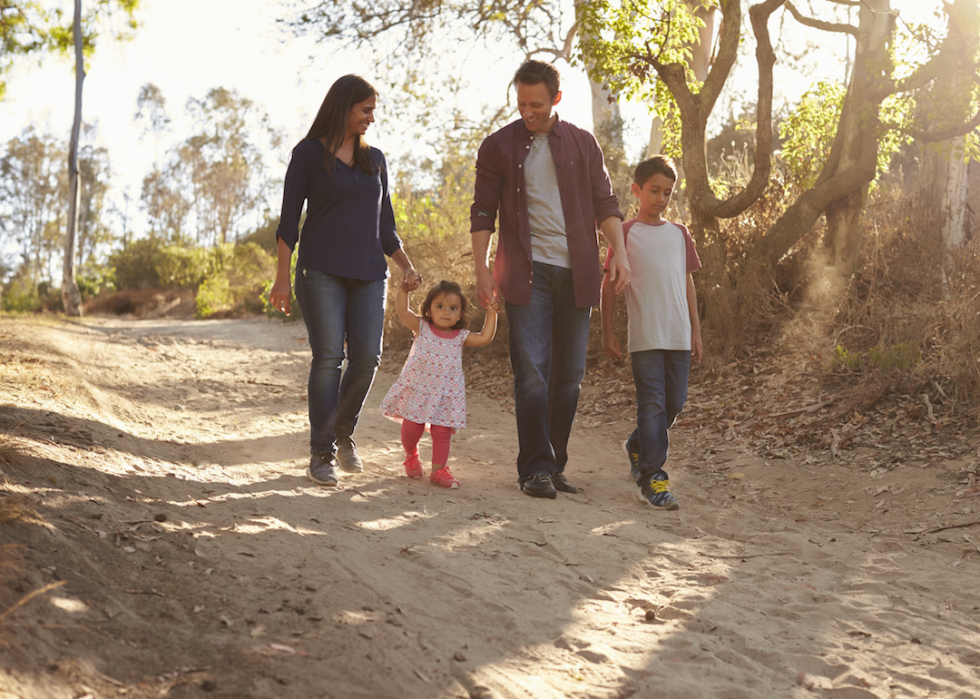
#15. Virginia
- Total multigenerational households: 117,794 (3.8% of total)
- Households with grandparent(s) living with grandchildren: 123,154 (3.9% of total, #21 highest among all states)
- Total households: 3.1 million
In 2001, 16% of Virginians lived in a multigenerational home. By 2017, that number had jumped to 22%. Experts point to the increasing diversification of the state, as racial groups in which it is more culturally prevalent for multiple generations to live together move in, along with difficult economic times.

#14. Delaware
- Total multigenerational households: 13,732 (3.8% of total)
- Households with grandparent(s) living with grandchildren: 14,322 (4.0% of total, #18 highest among all states)
- Total households: 357,765
Real estate experts in Delaware suggest jumping housing prices help explain the new attraction towards multigenerational living. They point to the trend of children moving back home with their parents as adults in a recession as a way to explain the spike.

#13. New Mexico
- Total multigenerational households: 30,240 (3.9% of total)
- Households with grandparent(s) living with grandchildren: 34,673 (4.5% of total, #6 highest among all states)
- Total households: 775,651
Multigenerational homes are in such demand in New Mexico that realtors are starting to organize entire tours based around them. Families interested in living together with multiple generations under one roof can tour an entire market of homes in the state that have been created just for them, and which retailers have put together an itinerary for.
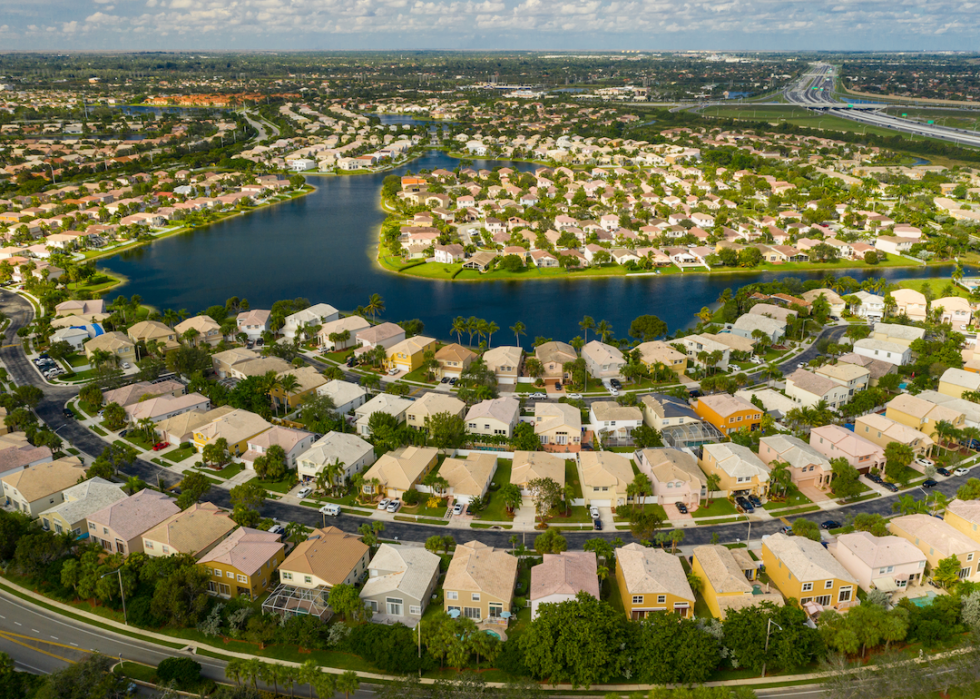
#12. Florida
- Total multigenerational households: 305,180 (4.0% of total)
- Households with grandparent(s) living with grandchildren: 299,035 (3.9% of total, #22 highest among all states)
- Total households: 7.6 million
One trend driving the spike in multigenerational housing in Florida? The increase in population in counties across the board, particularly in northeast Florida. This means that there is less housing stock as populations climb, meaning more families may need to shelter together.
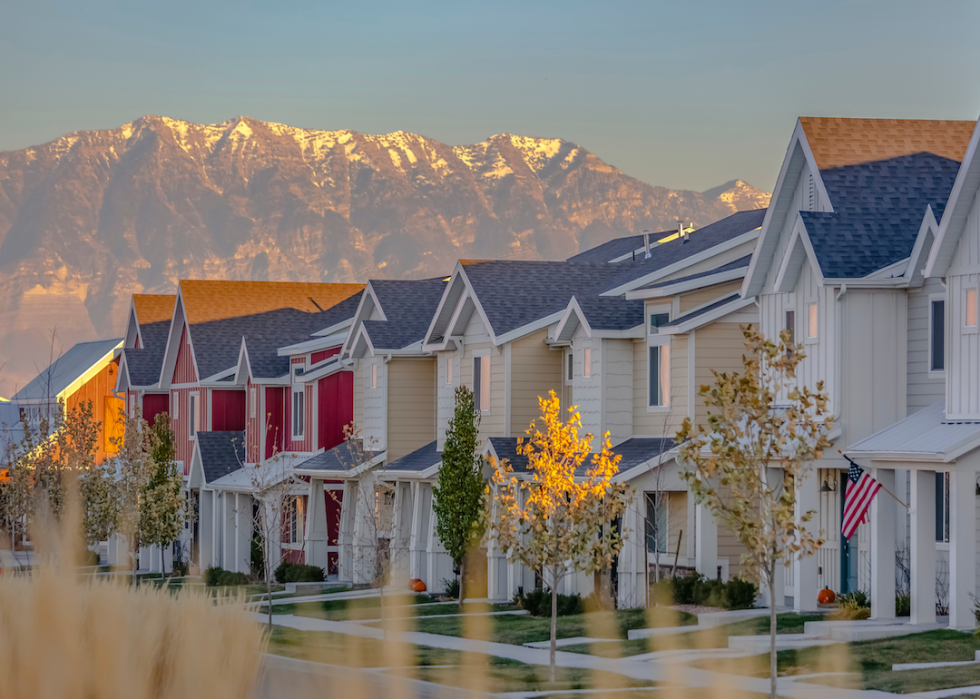
#11. Utah
- Total multigenerational households: 39,012 (4.1% of total)
- Households with grandparent(s) living with grandchildren: 39,959 (4.2% of total, #13 highest among all states)
- Total households: 957,619
A major driver of the higher number of families living in multigenerational housing in Utah is economic crisis. Experts in the state have said that difficult financial straits have forced families to come together, literally. In some parts of the state, the rate of multigenerational homes is as much as 10%.

#10. Nevada
- Total multigenerational households: 45,099 (4.2% of total)
- Households with grandparent(s) living with grandchildren: 45,105 (4.2% of total, #12 highest among all states)
- Total households: 1.1 million
Las Vegas developers, in particular, have seen a noted demand for homes that can accommodate three or more generations under the same roof. In 2013, there were only three builders working on such projects; three years later that number had climbed to 10.

#9. Arizona
- Total multigenerational households: 107,064 (4.2% of total)
- Households with grandparent(s) living with grandchildren: 112,585 (4.5% of total, #8 highest among all states)
- Total households: 2.5 million
Multigenerational living is on the rise in Arizona, particularly in Phoenix. And people in the area are starting to think about housing multiple generations under one roof relatively early on. Some millennials are even buying homes in the area anticipating bringing parents on under their roofs as the years pass.

#8. Georgia
- Total multigenerational households: 159,591 (4.3% of total)
- Households with grandparent(s) living with grandchildren: 171,437 (4.6% of total, #5 highest among all states)
- Total households: 3.7 million
Georgia has seen a boom in multiple generations living under one roof. Experts have cited everything from extended lifespans to economic downturns, while others point to the fact that the state has received an influx of Latino, Asian, and African American citizens to the state, importing with them cultural norms of multigenerational living.

#7. New York
- Total multigenerational households: 321,514 (4.4% of total)
- Households with grandparent(s) living with grandchildren: 300,044 (4.1% of total, #15 highest among all states)
- Total households: 7.3 million
With the staggeringly expensive New York City located in the state of New York, it is perhaps no surprise that some adult children, in particular, are opting to move back in with their parents. And there is a long tradition in some parts of the state of such multigenerational homes, particularly in Queens, where one recent Harvard Law School graduate elected to return to live with his family.
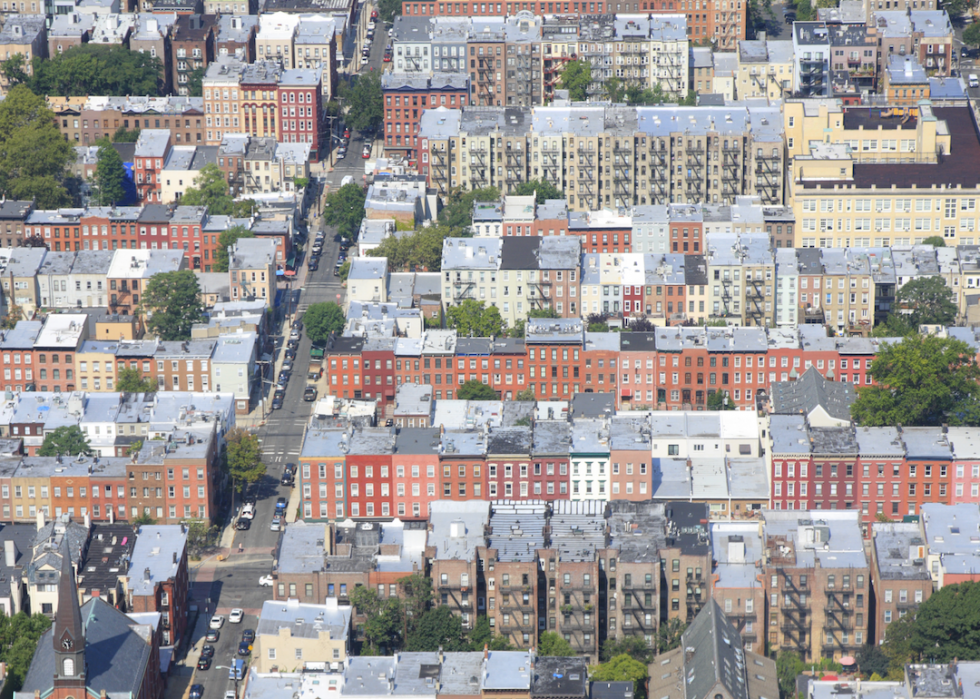
#6. New Jersey
- Total multigenerational households: 141,316 (4.4% of total)
- Households with grandparent(s) living with grandchildren: 127,396 (4.0% of total, #20 highest among all states)
- Total households: 3.2 million
Multigenerational households are on the rise in the state of New Jersey. Economic downshifts are often the reason for the middle generation, particularly those with young children of their own, to move back into their parents homes, observers in the state have noticed. In Camden, coronavirus cases ballooned by 2,925% in three weeks between March and April, in part because of multigenerational households in the area, according to Philadelphia Inquirer reporter Amy S. Rosenberg.
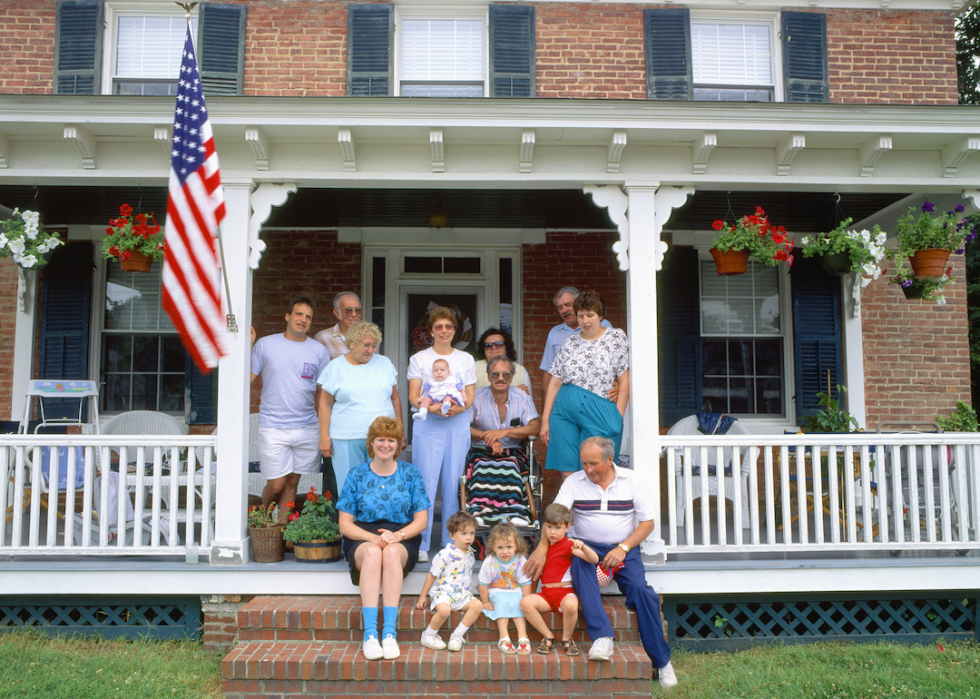
#5. Maryland
- Total multigenerational households: 101,292 (4.6% of total)
- Households with grandparent(s) living with grandchildren: 97,984 (4.5% of total, #7 highest among all states)
- Total households: 2.2 million
Entire Maryland communities are springing up to address the growing demand for multigenerational households. One Maryland builder is offering the first fully multigenerational community, as opposed to a single home, to cater to the many families in the state wishing to transition into such living arrangements.

#4. Mississippi
- Total multigenerational households: 52,001 (4.7% of total)
- Households with grandparent(s) living with grandchildren: 60,899 (5.5% of total, #2 highest among all states)
- Total households: 1.1 million
One reason Mississippians may have such high instances of multigenerational households? The median income in the state is just shy of $40,000, which means many families may choose to cohabitate in order to lower costs.
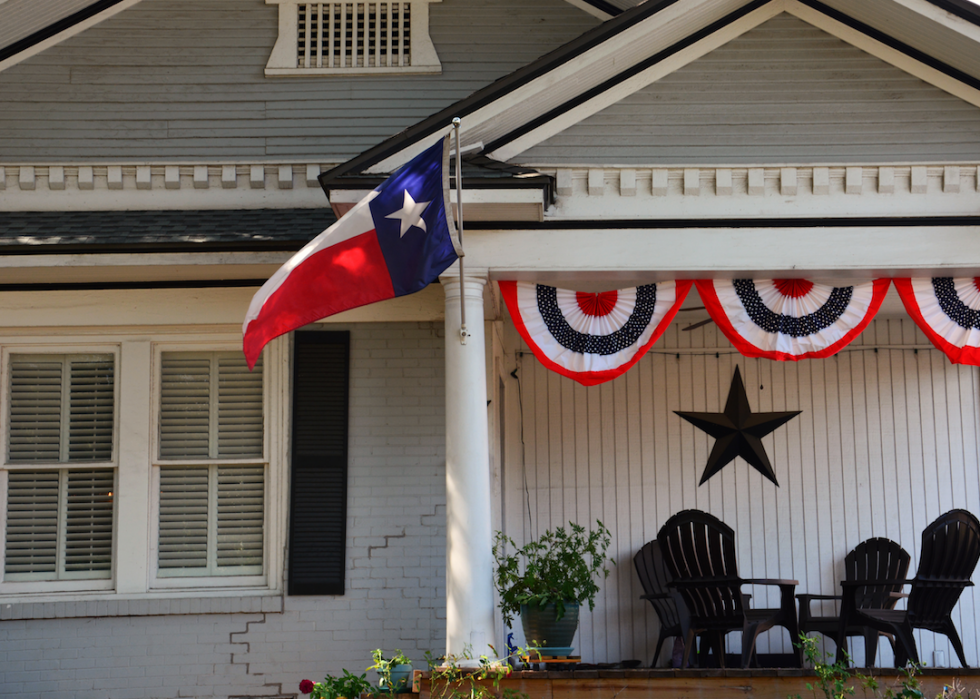
#3. Texas
- Total multigenerational households: 466,474 (4.9% of total)
- Households with grandparent(s) living with grandchildren: 489,464 (5.1% of total, #4 highest among all states)
- Total households: 9.6 million
Texas is home to a large Hispanic community, which may help explain its high ranking in the list of states with the most multigenerational families. Experts have said that it is more culturally typical for Hispanic families to house multiple generations under one roof.
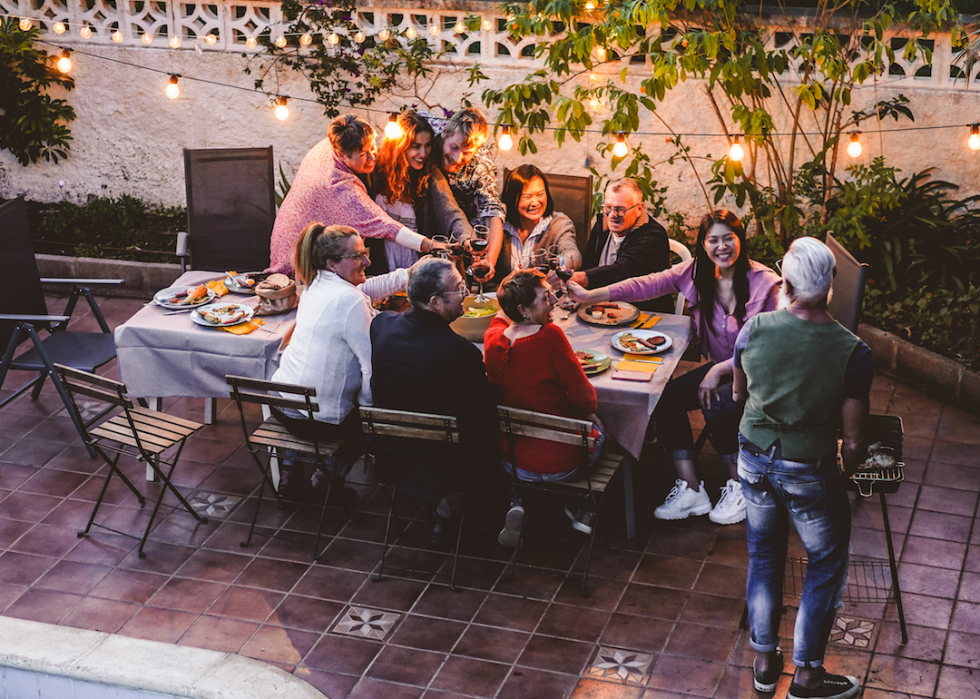
#2. California
- Total multigenerational households: 758,852 (5.9% of total)
- Households with grandparent(s) living with grandchildren: 708,290 (5.5% of total, #3 highest among all states)
- Total households: 13.0 million
One reason Californians have such high instances of multigenerational households is due to the ethnic makeup of the state. The state has high numbers of Asian American residents—a demographic more likely to live as multigenerational households.

#1. Hawaii
- Total multigenerational households: 36,272 (7.9% of total)
- Households with grandparent(s) living with grandchildren: 34,673 (7.6% of total, #1 highest among all states)
- Total households: 456,782
Hawaii takes the #1 slot for multigenerational households; with home prices in the state being what the are, this is perhaps no surprise. On the island of Oahu, single-family homes typically retail for just shy of $800,000—which means few families are able to afford to purchase such a home to live in themselves.



